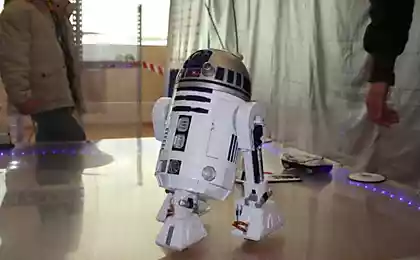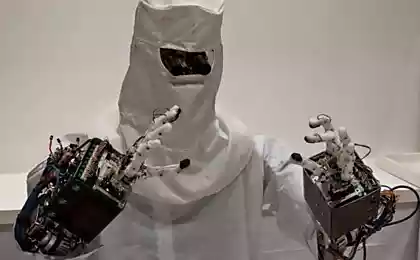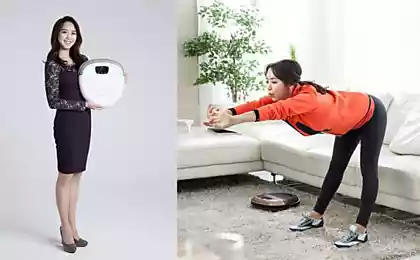854
ELEGS - a unique robotic exoskeleton
Amanda Boxtel, one of the hospital patients' Craig Hospital "shows the device eLEGS, represents the very latest robotic exoskeleton for patients who suffer from paralysis or weakness of the limbs. Amanda Boxtel was paralyzed from the waist down after an accident that occurred during skiing, and now, with the help of a unique instrument, it will be able to walk. ELEGS was developed by «Berkeley Bionics» and will be field-tested in the hospital Craig Hospital.
11 photos from here
1. Adam Zoss, chief engineer of the company «Berkeley Bionics» (center) and Heitor Bender, chairman of the company next to Amanda Boxtel, demonstrating the unique device.

2. This "rucksack" - one of the main parts of the robot exoskeleton ELEGS.

3. Adam Zoss, chief engineer of the company «Berkeley Bionics», shows the LCD monitor, the suspension, which is part of the robot exoskeleton ELEGS.

4. The device ELEGS literally "bring up" patients confined to a wheelchair.

5. Dr. Daniel Lammertse, director of the Research Center Hospital "Craig Hospital", on the right, and Chris Shappell watching how Amanda Boxtel walks into the room, accompanied by Adam Zossa, chief engineer of the company «Berkeley Bionics».

6. Heitor Bender, chairman of the company «Berkeley Bionics».

7. elbow Amanda Boxtel attached wiring, called «HMI» («man-machine interface"), which operate as an indicator of the direction of motion.
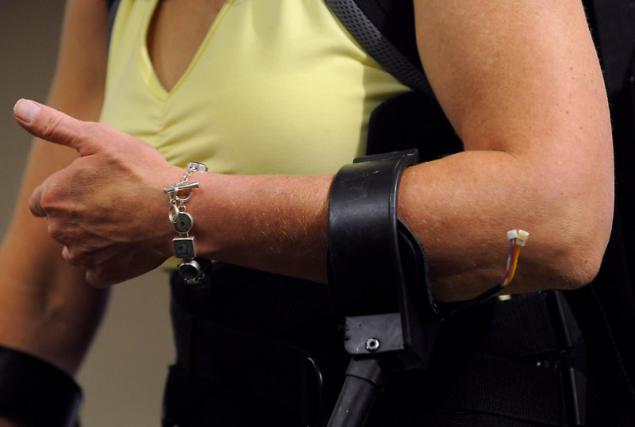
8. Heitor Bender, chairman of the company «Berkeley Bionics», explains the advantages of robotic exoskeleton ELEGS.
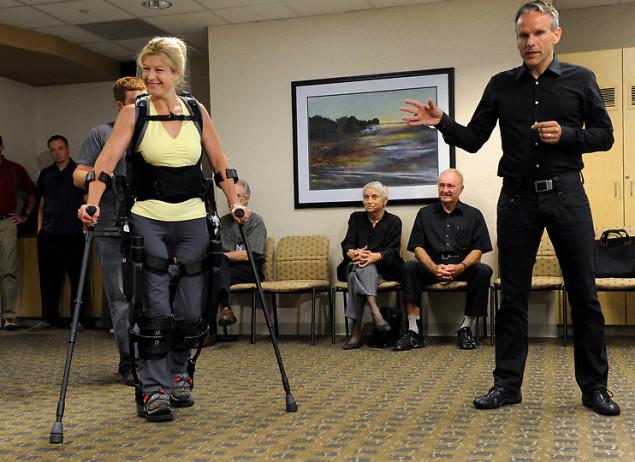
9. Amanda Boxtel talks about what an amazing feeling - to be back on his feet. She listens approvingly and applauding Adam Zoss, chief engineer of the company «Berkeley Bionics».
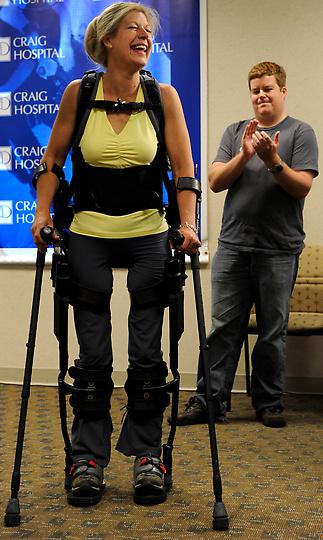
10. Amanda Boxtel demonstrates the robotic exoskeleton.

11. Amanda Boxtel and Adam Zoss, chief engineer of the company «Berkeley Bionics».

Source:
11 photos from here
1. Adam Zoss, chief engineer of the company «Berkeley Bionics» (center) and Heitor Bender, chairman of the company next to Amanda Boxtel, demonstrating the unique device.

2. This "rucksack" - one of the main parts of the robot exoskeleton ELEGS.

3. Adam Zoss, chief engineer of the company «Berkeley Bionics», shows the LCD monitor, the suspension, which is part of the robot exoskeleton ELEGS.

4. The device ELEGS literally "bring up" patients confined to a wheelchair.

5. Dr. Daniel Lammertse, director of the Research Center Hospital "Craig Hospital", on the right, and Chris Shappell watching how Amanda Boxtel walks into the room, accompanied by Adam Zossa, chief engineer of the company «Berkeley Bionics».

6. Heitor Bender, chairman of the company «Berkeley Bionics».

7. elbow Amanda Boxtel attached wiring, called «HMI» («man-machine interface"), which operate as an indicator of the direction of motion.

8. Heitor Bender, chairman of the company «Berkeley Bionics», explains the advantages of robotic exoskeleton ELEGS.

9. Amanda Boxtel talks about what an amazing feeling - to be back on his feet. She listens approvingly and applauding Adam Zoss, chief engineer of the company «Berkeley Bionics».

10. Amanda Boxtel demonstrates the robotic exoskeleton.

11. Amanda Boxtel and Adam Zoss, chief engineer of the company «Berkeley Bionics».

Source:









